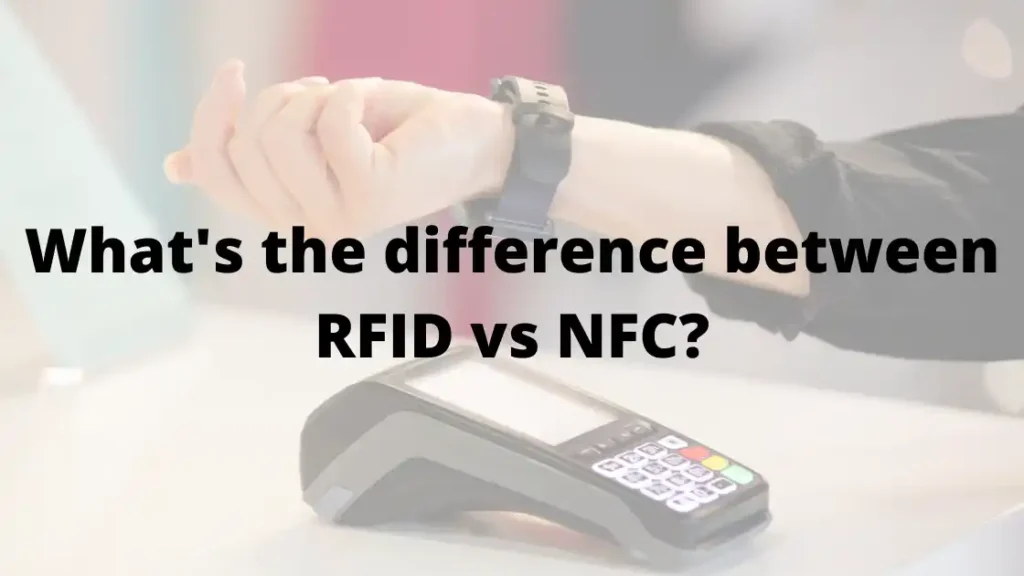
RFID vs NFC are two wireless technologies closely related to each other but are different in both aspects. It can be hard to choose the more likely one to fulfill all your needs.
Technology has taken its steps forward in every field of life. Things changed from being attached to cords to being cordless and free to be used anywhere. Wireless connections for data transfer and communication have grown enormously.
Here is a piece of brief information on both wireless technologies. The difference between both is elaborated, so it becomes easier to find a suitable wireless system.
What Is NFC?
NFC is a simple type of wireless data transfer. It reads encrypted data from a significant NFC tag through an NFC-enabled device.
NFC has revolutionized how people interact with their smart devices by providing a highly convenient way to transfer data and make payments.
This breakthrough technology is sure to shape the future of digital communication as it continues to be adopted in more parts of the world.
Working of NFC
NFC is easy to operate. NFC refers to Near Field Communication. It enables sharing of information between two devices, which is a two-way information reading system. One device has an NFC tag, which is a chip that contains all the information encrypted, while the other is the reader device that reads the information and displays it to the user.
NFC can be generated and pasted on stickers and labels. NFC involves the orders by the users on the spot and cannot work automatically.
Uses for NFC
- Transferring data
- Accessing transport
- Mobile payments
- Automating devices
What Is RFID?
RFID is a much-developed technology that comes with extensive features. RFID scanner is the technology to scan the code and find out a device’s location with a tag chip.
Working of RFID
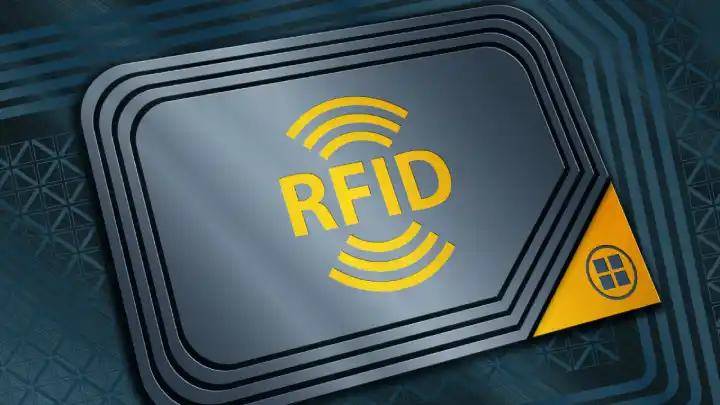
RFID is a more developed wireless technology. It refers to Radio Frequency Identification Reader. The technology uses a reader and some tags, and both sides can communicate in RFID. Tags installed permanently or remotely in any device send signals to the reader device. It shares information like location, user identity, and contacts of tagged artifacts with external factors.
RFID tags come with an antenna that caches the information and sends data.
Uses for RFID
- Tracking inventory
- Tracking attendees
- Preventing theft
- Controlling access
Comparing Range Of Wireless Connectivity
Both the devices come with a different range of wireless connections.
- NFC comes with a range of almost 0.1 meters which can also be considered a few centimeters. It means that the tag should be very close to the reader device.
- RFID is used in a wide range of security aspects; hence it comes with a wide connectivity range. It can work till a thousand meters or more.
Power Source In NFC
In NFC, when we talk about the reader, it is mostly a cell phone, or a tablet charged using electric supplies. The use of the cell phone, which is widely available as a reader, reduces the cost of the NFC wireless system.
When we talk about the tag, it does not need a definite power source once it is created. It can be read easily from product labels stickers or even on another device like a cell phone.
Power Source In RFID
When we talk about RFID, it can be of two types, remote reader or fixed reader.
- A remote reader might be a cell phone with proper RFID software installed, which is a cheaper way to use RFID.
- The second type of reader is a fixed reader device. These devices work with adapters using electric power sources and batteries. These readers are installed in homes and offices, or related areas using RFID devices.
Based on the power source, RFID tags also come in two formats. Few tags have the battery installed in them, making them work on receiving the signals from the reader. Others do not come with a battery. These tags are activated when the antenna catches any signal from the reader and generates electromagnetic radiations, which prove to be a power source for the tag and transmit information.
Tags process the information when readers ask them.
Comparing Divulgence Ability
Both the wireless systems NFC and RFID involve contrasting imparting potential.
- NFC performs as a reciprocal communication system. Both the devices equally get the advantage of data transfer.
- RFID is a partial information sharing system where the reader can only get the data.
Comparing Security Level
Both the wireless networks are secure, but when we talk about RFID, it has a wide range of connectivity, making it more prone to hackers.
NFC comes with less connectivity but is more secure.
Compatibility OF NFC
- NFC works on the principle of compatibility NFC enabled devices.
- Is compatible with many cell phone brands, which involve the iPhone 7 to all the new models of the iPhone.
- And NFC is also compatible with Android, Windows Phone, Tablets, and Blackberry.
Frequency Range Of RFID
RFID works with different frequency ranges. RFID involves the following frequency ranges.
- Ultra-High Frequency (UHF)
- High Frequency (HF)
- Low Frequency (LF)
The range of reading in High and Low Frequency systems remains only a little centimeters away. And however, Ultra High Frequency tags are often ranges more than one meter away.
Frequency Range Of NFC
Systems of NFC operate the same as HF ( RFID ) – 13.56 MHz systems. So that’s why there are only short range reading limitations.
NFC devices should be in very close relation because of short read range limitations which are not more than a few centimeters.
Information Processing Ability
NFC can store data up to 4KB. This 4KB data can be in URL media or any other readable form.
RFID is more expensive. It takes a proper device to extract information. However, the information can be in different forms and stored unlimitedly.
Application of NFC
NFC is one of the most beneficial wireless technologies. Following are a few advantages of NFC listed below.
- Brands use NFC technology to maintain their copyright. It acts as a protection for the brand.
- Mobile Payments are very secure through NFC. Many cell phones use NFC technology in their cell phone, such as Apple introduced Apple Pay supported by NFC.
- Many brands come with NFC labels on the products, which have URL encoded in it and all the product information.
Application OF RFID
RFID is widely used worldwide to keep the pricey essentials secure. It acts as an anti-lost feature.
- The RFID chip is installed in the participants of a race; it helps choose the winner as it keeps an eye on the speed and time in which the contestants completed the race.
- RFID chips help to locate pets within the area.
- Truck owners use RFID technology to locate the trucks.
- It is installed in shipments to see if they are delivered in time or not.
- It helps to save the essentials from being lost.
Benefits NFC vs RFID
Both of the wireless connections come with versatile benefits. Here is a list for both RFID and NFC.
Benefits Of RFID
Here are a few benefits of RFID.
- RFID can read more tags simultaneously.
- RFID does not need any action by users.
- These show visibility of connected thing and gives real-time notifications.
- It does not need additional hardware.
RFID benefits for healthcare
The medical lapses are highly impacted on the health of any individual and it also causes death. Errors in medical records, inventory outdated, too much waiting in hospitals for your turn and parking issues are also effects badly on public health. In this way, RFID provides a solution to this problem that you can easily identify or read tags that are attached to the objects.
With the help of RFID all processes become easy like form submission, patient admission, Drug intake, and also simplifies communication between medical staff and a patient and reduces the risk of wrong intake of medications.
Growth of RFID
With the passing of time, RFID on the other hand, is also making its great worth and passes 35 billion across 2020 with innovative ideas.
Benefits OF NFC
Following are the benefits of NFC.
- It offers two-way communication.
- Gives data storage.
- It is a more secure way.
- Helps in online payments and billing.
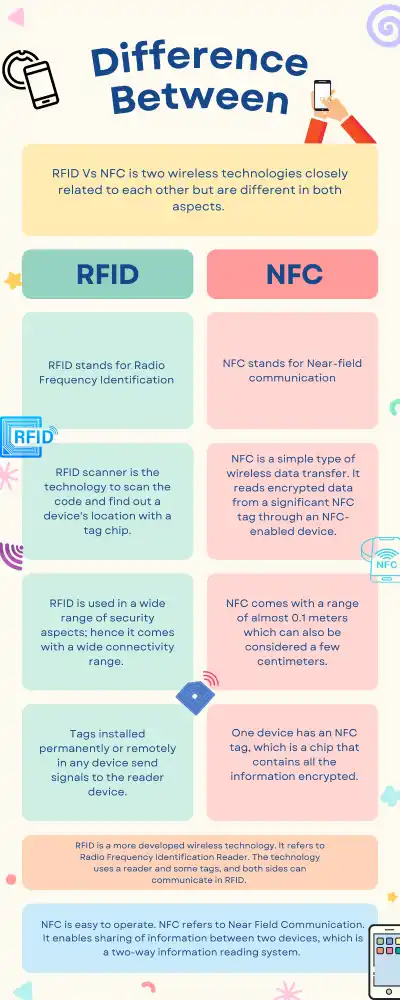
NFC benefits for healthcare
In a recent report of Transparency Market Research ( TMC ) , health care shows a faster growth for NFC.
There are six ways how NFC helps healthcare to provide better service:
- It helps Real-Time Updates on Patient Care: NFC lets you track where the patients are present and which medication they took. When nurses give first aid or last visits and doctors are being monitored.
- Safer Medications: When the tags of NFC are added to packets or labels of medicines so by the apne tap on tag it will be verified the authenticity of medications. You can easily take the precautions and read the dosage and side effects about it.
- Secure Physical Access: NFC helps to keep security of medications, buildings and equipment etc. Which means that the areas that are related to medical staff and patients are really examined by NFC tags through their smart mobiles, tablets or passes. So it can easily monitor the entrance and exit movement of any individual.
- Home Monitoring: It is defined as that if a patient taps their wrist bands to the smart phones or any device so their medical record will show to the medical staff and they can examine the present condition of a patient.
- Secure Logical Access To Medical Information: Everything needs protection so medical information comes here at first. So by using NFC it becomes very easy to control access to files and data of medical personnel and it can be updated as soon as possible with great perfection.
- Intelligent ID Bracelets: It works in emergency situations like asthma, attack and so on. The NFC phone reads the medical information from the wrist bracelet of a patient when they come to hospital in a critical condition.
Growth of NFC
With the passing of time, RFID on the other hand, is also making its great worth and passes 35 billion across 2020 with innovative ideas.
I hope you have learned all about NFC vs. RFID and chosen the best technology collaborating with all your requirements.

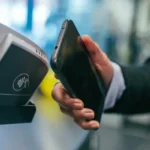


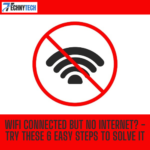
Leave a Reply